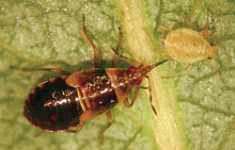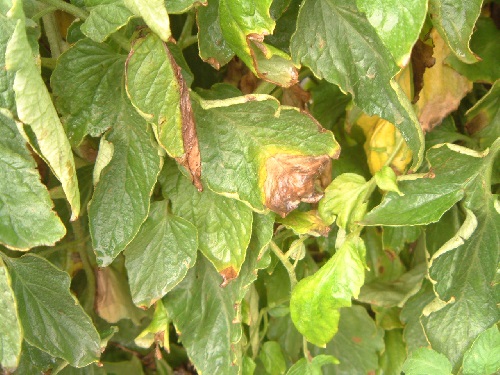Beneficial Of The Month: Pirate Bug

Identification
It is important that growers recognize that most insects are not harmful to crops, and many are actually beneficial. One example is the pirate bug (Orius sp.). Orius is a generalist predator that preys on a number of small insects. In the east, O. insidiosus is most common, while O. tristicolor is more common in the western states.
Adults are tiny (1/8-inch long), oval-shaped, black bugs with white wing patches resulting in a band-like appearance across the body. Due to their coloration, pirate bugs are occasionally mistaken for chinch bugs. Nymphs are small, orang- brown, fast-moving, wingless insects.
Survival And Spread
Females lay eggs hidden within plant tissues. These hatch into nymphs, which develop through five nymphal stages before becoming winged adults. Development from egg to adult takes approximately 20 days. Females lay an average of 129 eggs during their life spans, and adults live about 35 days. Several generations may occur during a growing season.
Beneficial Activity
Orius are important natural enemies of many crop pests and play an important pest management role in alfalfa, corn, cotton, peas, peanuts, peppers, sorghum, soybeans, and strawberry. Nymphs and adults feed on a variety of soft-bodied arthropods including aphids, insect eggs, spider mites, thrips, whiteflies, and small caterpillars. Orius holds its prey with its front legs and inserts its beak into the host body, until the soft body is empty and only the exoskeleton remains. This beneficial can be an important predator of corn earworm eggs, but it is believed that thrips and mites compose a considerable fraction of an Orius diet. They feed on pollen and plant juices when prey is not available.
Orius sp are used as generalist predators, especially on cucumber and bell pepper crops. Orius species are available commercially for augmentive biological control releases.
Both immature and adult bugs can consume 30 or more spider mites per day, although Orius has been observed to leave prey before having completely consumed it to attack another mite. In this way, many more mites may be destroyed than those needed to fulfill nutritional requirements.
Diversified cropping systems, use of microbial insecticides, and use of economic thresholds to minimize insecticide applications are all important to maximize the natural biological control from Orius. Plantings of flowering plants will help them survive periods of scarce prey. Foliar applications of insecticides to crops can greatly reduce Orius numbers. Even soil-applied systemic insecticides may reduce their numbers because of their habit of sucking plant juices.










